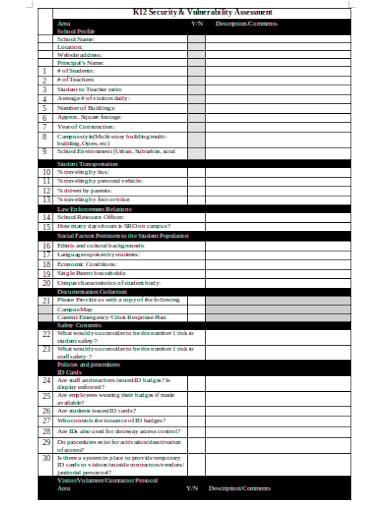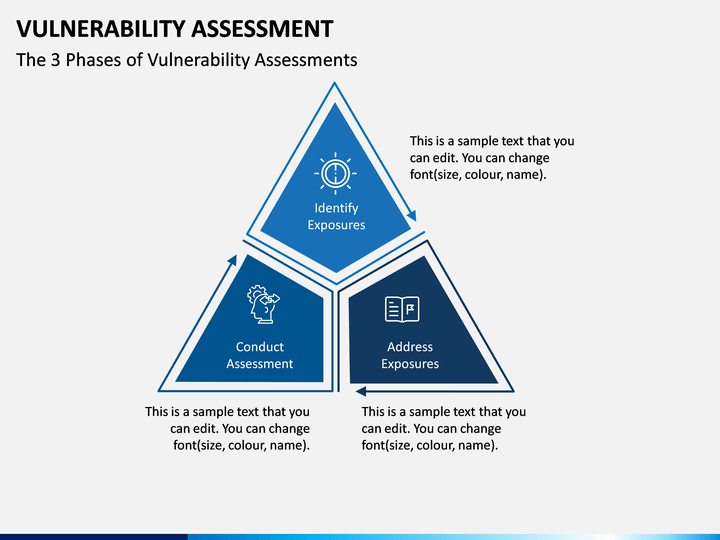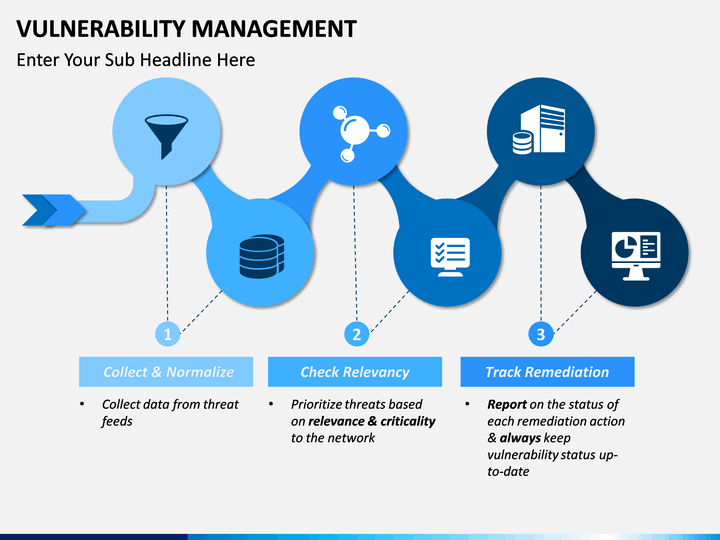Security across all network ports should include defense-in-depth. Close any ports you don't use, use host-based firewalls on every host, run a network-based next-generation firewall, and monitor and filter port traffic, says Norby. Do regular port scans as part of pen tests to ensure there are no unchecked vulnerabilities on any port. Pay particular attention to SOCKS proxies or any other service you did not set up.
Patch and harden any device, software, or service connected to the port until there are no dents in your networked assets' armor. Be proactive as new vulnerabilities appear in old and new software that attackers can reach via network ports. The solution comes from network security applications that perform active port scanning and banner grabbing in order to determine open ports, and the applications / services behind them. Such solutions give instant visibility into the security of your server from the outsider's perspective, by mimicking attacker's behavior. Some solutions gather extended information about the applications and services behind open ports, and also point out potential vulnerabilities which may be exploited. Aport scanis a method for determining which ports on a network are open.
As ports on a computer are the place where information is sent and received, port scanning is analogous to knocking on doors to see if someone is home. Running a port scan on a network or server reveals which ports are open and listening , as well as revealing the presence of security devices such as firewalls that are present between the sender and the target. It is also valuable for testing network security and the strength of the system's firewall.
Due to this functionality, it is also a popular reconnaissance tool for attackers seeking a weak point of access to break into a computer. Scanning tools used by both attackers and security professionals allow an automated detection of open ports. Many network-based IDS/IPS solutions, and even workstation-based endpoint security solutions can detect port scanning. It is worthwhile to investigate port scanning originating from inside the local network, as it often means a compromised device. However, computers running some security solutions can generate false positives. This is beacause vendors of security solutions feature a port scanner to detect vulnerable devices inside a home network.
These cybercriminals often use port scanning as a preliminary step when targeting networks. They use the port scan to scope out the security levels of various organizations and determine who has a strong firewall and who may have a vulnerable server or network. A number of TCP protocol techniques actually make it possible for attackers to conceal their network location and use "decoy traffic" to perform port scans without revealing any network address to the target. Each open port may be the target of denial of service attacks.
The crash of the unused NTP service causes system instability and may bring down an entire server. Thus, an attacker can perform successful denial of service attacks on a web server, without even targeting port 80. By sending a specially-crafted SNMP SetRequest PDU sent to UDP port 16, a remote attacker could exploit this vulnerability to cause the application to crash. Port knocking cannot be used as the sole authentication mechanism for a server.
From a security perspective, simple port knocking relies on security through obscurity; unintended publication of the knock sequence infers compromise of all devices supporting the sequence. Furthermore, unencrypted port knocking is vulnerable to packet sniffing. A network trace of suitable length can detect the correct knock sequence from a single IP address and thus provide a mechanism for unauthorised access to a server and by extension, the attached network.
Once compromised, the log files on the device are a source of other valid knock sequences, revealing another point of failure. Solutions such as treating each knock sequence as a one-time password defeat the aim of simplified administration. In practice, port knocking must be combined with other forms of authentication that are not vulnerable to replay or man-in-the-middle attacks for the whole system to be effective. The scanner then terminates the session without establishing a connection. If the port is closed, it responds with an RST packet, indicating that it cannot be accessed. If the port is located behind a firewall, the request does not generate a response at all.
This is the most common scanning method because it does not require an established connection and is not logged by most simple event-tracking tools. On the other hand, SYN scanning requires superuser privileges on the device that sends the requests and which might not belong to the attacker. RUCKUS could allow a remote attacker to bypass security restrictions. An unauthenticated remote attacker with network access to port 22 can tunnel random TCP traffic to other hosts on the network via Ruckus devices.
A remote attacker could exploit this vulnerability to bypass security restrictions and gain unauthorized access to the vulnerable application. All networks are secured by one firewall on the perimeter of the network, and this firewall is configured to permit HTTP and SMTP traffic to pass through. Other application traffic is forced to use a secured tunnel to pass through the network. Of course, the perimeter firewall is configured to monitor the traffic, and a log is kept for analysis.
Internal network is built using Ethernet segments to reflect the infrastructure of the organization. IP network segments are then superimposed on the Ethernet segments. Each IP network segment is secured from each other by a firewall.
Each of the IP segments is connected to the layer-3 switch, thus further protecting each IP segment from an external attack. The IP traffics from the layer-3 switch are directed to pass through a Demilitarized ZONE before it enters the perimeter router. The nodes in the DMZ are DNS, SMTP, and HTTP servers, which are permitted for both inbound and outbound traffic. The attacker would scan the ports on the perimeter firewall and look for open ports on the firewall. The firewall would have the ports such as 80 and 25 (well-known) open for Web and email services.
The goal of the attacker is to find which ports in "listen," "wait," or "closed" state. The goal behind port and network scanning is to identify the organization of IP addresses, hosts, and ports to properly determine open or vulnerable server locations and diagnose security levels. Both network and port scanning can reveal the presence of security measures in place such as a firewall between the server and the user's device.
Every logical port is subject to a threat to a system, but some of the commonly used ports receive a lot of attention from cybercriminals. Cybercriminals use vulnerability scanners and port scanning techniques for identifying opened ports on any system or server. Next, they can identify what kind of services are running and the kind of system being used by the target victim. Here's the list of potential logical ports that are the targets of cybercriminals. Open ports are used by applications and services and, as any piece of code, they may have vulnerabilities or bugs.
The more applications and services run using open ports for Internet communication, the higher the risk of one of them having a vulnerability that can be exploited. A bug in one service reachable from the outside may cause it to crash. Such a crash may lead to execution of arbitrary code on the affected machine, exactly what the attacker needs in order to be successful. Behind open ports, there are applications and services listening for inbound packets, waiting for connections from the outside, in order to perform their jobs. Security best practices imply the use of a firewall system that controls which ports are opened or closed on Internet-facing servers.
Additionally, security best practices advise that ports should be open only on a "need-to-be" basis, dictated by the Internet communication needs of applications and services that run on the servers. Businesses can also use the port scanning technique to send packets to specific ports and analyze responses for any potential vulnerability. They can then use tools like IP scanning, network mapper , and Netcat to ensure their network and systems are secure. As port scanning is an older technique, it requires security changes and up-to-date threat intelligence because protocols and security tools are evolving daily. As a best practice approach, port scan alerts and firewalls should be used to monitor traffic to your ports and ensure malicious attackers do not detect potential opportunities for unauthorized entry into your network. Some services or applications running on open ports may have poorly configured default settings or poorly configured running policies.
Such applications may be the target of dictionary attacks, and, with poorly configured password policies, for example, attackers can identify credentials used by legitimate users. Furthermore, attackers can use the credentials to log into such applications, steal data, access the system, cause downtime or take control of the computer. Hillstone Software HS TFTP Server is vulnerable to a denial of service, caused by an error when processing TFTP requests. By sending a specially-crafted READ/WRITE request packet containing an overly long filename to UDP port 69, a remote attacker could exploit this vulnerability to cause the TFTP service to crash.
NJStar Communicator is vulnerable to a stack-based buffer overflow, caused by improper bounds checking by the MiniSMTP server when processing packets. By sending a specially-crafted request to TCP port 25, a remote attacker could overflow a buffer and execute arbitrary code on the system or cause the application to crash. Multiple C-Data OLT devices are vulnerable to a denial of service, caused by a shawarma attack. By sending random bytes to the telnet server on port 23, a remote attacker could exploit this vulnerability to cause the device to reboot. Nmap includes an advanced port scan option that is used to scan firewalls to determine their connection state and rulesets. The TCP ACK scan (-sA) creates and sends a packet to the target with only the ACK flag set.
Unfiltered systems will respond with a RST packet for both open and closed ports. If an ICMP error message or no response is received, the port is considered filtered by a firewall. If Nmap receives an ICMP unreachable error it will report the port as filtered. These advanced port scanning options are stealthy and may bypass firewalls and other security controls. However, most host- and network-based intrusion detection systems will detect this type of scan activity. Keep in mind that OSes that don't follow the TCP RFC may send misleading responses.
In fact, the host discovery element in network scanning is often the first step used by attackers before they execute an attack. EternalBlue has been used both as the initial vector of attack and as a way to perform lateral movement after a network has been infiltrated. The exploit works when attackers send crafted packets to a system running SMBv1. In the case of WannaCry, attackers exploited the vulnerability by loading malware on the vulnerable target system and then spreading that malware via the same vulnerability to other systems on the network. EternalBlue was also used in the NotPetya attacks and as part of the TrickBot malware Trojan. Siemens SIPROTEC 4 and SIPROTEC Compact is vulnerable to a denial of service, caused by an error in the EN100 Ethernet module.
By sending specially-crafted HTTP packets to TCP port 80, a remote attacker could exploit this vulnerability to cause the device to go into defect mode. SolarWinds TFTP Server is vulnerable to a denial of service, caused by an error when handling Read Request requests. By sending a specially-crafted Read Request to UDP port 69, a remote attacker could exploit this vulnerability to cause the server process to crash.
Cisco IOS is vulnerable to a denial of service, caused by an error in NAT of DNS. By sending specially-crafted DNS packets to TCP port 53, a remote attacker could exploit this vulnerability to cause the device to reload. The next step is to sweep the target network to find live nodes by sending ping packets and waiting for response from the target nodes. ICMP messages can be blocked, so an alternative is to send a TCP or UDP packet to a port such as 80 that is frequently open, and live machines will send a SYN-ACK packet in response. You'll most commonly detect scans and sweeps from Script Kiddies or other automated, semi-intelligent attacks. More experienced Black Hats will scan more slowly, generally slow enough to avoid being detected by a firewall.
This technique of sending port scanning packets infrequently over a long period of time is known as a slow scan. Cyber criminals don't limit their attacks to web applications, so detection systems shouldn't either. In computer networking, port knocking is a method of externally opening ports on a firewall by generating a connection attempt on a set of prespecified closed ports. Once a correct sequence of connection attempts is received, the firewall rules are dynamically modified to allow the host which sent the connection attempts to connect over specific port.
which open ports are vulnerable
A variant called single packet authorization exists, where only a single "knock" is needed, consisting of an encrypted packet. The FTP bounce scan uses the FTP proxy feature on an FTP server to scan a target from the FTP server instead of your system. The FTP proxy feature allows you to log into an FTP server and request a file to be sent to another system. By sending files to a target system and port you can determine whether a port is open or closed. Most FTP servers no longer support this functionality, but some are still available.
The FTP bounce scan can be used to bypass firewalls by scanning from an organization's FTP server, which may be on an internal network, or allowed to the internal network by the firewall rules. In the bounce scan, the attacker would attempt to fool or mislead the victim into believing that the attack originated from a different source IP address, often known as the distributed denial-of-service attacks . Such an attack would make it difficult to trace the attacker's IP address. Most commercial Internet sites such as Yahoo, Google, Microsoft, and others support proxy services so that all Web traffic can be directed to a single server for filtering as well as caching to improve performance. We have seen cases of DDOS in spite of the proxy servers' setup to protect the networks.
We have already discussed the significance of TCP and UDP port numbers, and the well-known and not so well-known services that run at these ports. Each of these ports is a potential entryway or "hole" into the network. If a port is open, there is a service listening on it; well-known services have assigned port numbers, such as http on TCP port 80 or telnet on TCP port 23.
Port scanning is the process of sending packets to each port on a system to find out which ones are open. This will help an attacker to determine what services may be running on the system. Some port scanners scan through ports in numeric order; some use a random order. There are many different methods used for port scanning, including SYN scanning, ACK scanning, and FIN scanning.
Port scanning is the act of investigating a computer or servers ports – where information is sent and received – in the hopes of detecting activity or vulnerability. It helps to think of port scanning as knocking on doors to see if anyone is inside. Running a port scan on a network or server shows which ports are open and listening , and reveals the location of security systems that are present between transmitter and target. A port scan is a common technique hackers use to discover open doors or weak points in a network.
A port scan attack helps cyber criminals find open ports and figure out whether they are receiving or sending data. It can also reveal whether active security devices like firewalls are being used by an organization. Here are some of the critical ports that are prone to cyber-attacks.
Port 21 of TCP helps in connecting an FTP server, which carries a bunch of vulnerabilities such as anonymous authentication, directory traversal and helps in performing an XSS attack. Another port 23 , is fundamentally unsafe because the data is in unmasked form and remains in plain text. Here, attackers can listen to or scrounge for sensitive data and inject commands (in the form of a Man-in-the-middle attack). The daemon that is listing on a port, could be vulnerable to a buffer overflow, or another remotely exploitable vulnerability.

























